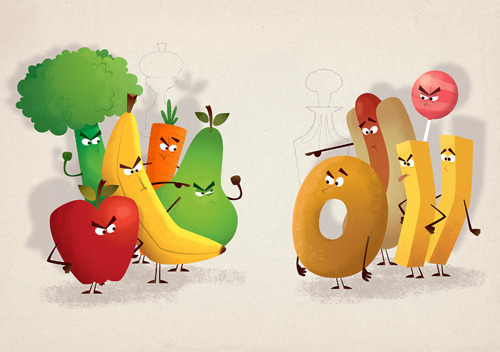In the battle of unhealthy food vs healthy food, eating something good for you is the clear winner. Right? The problem is that many people are confused about what is unhealthy and what is healthy. With so many questions about labels, ingredients and what is actually right for you, it can be tough to get a clear answer. Understanding the differences in food can help you make the right choices. So just keep reading to get better understanding for better choices.

Overview of Unhealthy Food vs Healthy Food
So what is healthy – and what is not? It helps to look at what the experts have to say.
1. Food List
Healthy diets are those that are made up of foods that fuel your body but don't add anything unnecessary. These include whole grains, lean protein, vegetables and fruit, nuts and seeds, and low-fat dairy. Unhealthy diets include things like saturated fat, added sugar and high levels of sodium. Healthy foods are usually all-natural; unhealthy foods are processed.
2. Nutrient Intake
Eating healthy means you get plenty of essential vitamins and minerals, something that far too many adults are lacking in the nation today. Whole grains provide fiber, dairy provides calcium, fruits and vegetables provide potassium, and lean meats can provide protein. This is just the tip of the tasty iceberg when it comes to nutrients and minerals essential to your body function. While unhealthy food can only increase your intake of sugar, bad fat, etc. that have been listed above.
3. Healthy Concern
Studies have shown that eating unhealthy foods can increase your risks of cancer and the chances of getting Type 2 diabetes. Heart disease is also a consideration. Unhealthy food can make you obese over time, and obesity can lead to a host of serious health problems. While when you opt to eat only healthy foods, you will have better weight management, increased energy levels, a boost in immunity, and a better emotional balance. All of these things can combine to create a much happier and longer life.
4. Cost
Some might argue that they can't afford healthy foods, and that the unhealthy foods are much cheaper. However, studies have shown that for only $1.50 per day, a person can eat much healthier options. That's a small price to pay for better health. Buying healthy things in bulk, such as whole grains, can help cut the costs down even more.
Include More Healthy Food and Less Unhealthy Food
Once you know the difference between unhealthy food vs healthy food, you might wonder how you can incorporate more good foods into your diet. After all, habits are very hard to break, and you are probably accustomed to unhealthy food – after all, it tastes great! But you can take steps to replace the unhealthy foods with the better ones.
Start by slowly replacing what you buy at the store with healthier items. For instance, instead of that large soda, buy a case of flavored water – with no added sugar, of course. Instead of reaching for the ice cream, look to the produce aisle and invest in some watermelon or other sweet fruits. Over time, you can convince yourself to eat healthier.
In the battle of unhealthy food vs healthy food, the better stuff always wins. Here are ten great foods that can get you started down the road to success.
|
10 Wonderful Healthy Foods |
|
|
Food |
Benefits |
|
Apples |
These fruits are loaded with fiber and vitamin C, both of which are essential for good health. Vitamin C is an antioxidant that can help with connective tissue, blood vessels, and helps you absorb iron. |
|
Almonds |
These nuts are loaded with fiber, magnesium, iron, calcium and riboflavin, as well as a hefty dose of vitamin E. There is fat, but it's the good stuff that is kind to your heart. |
|
Red beans |
These little powerhouses of fiber are full of protein and phytonutrients, too. They also have iron and potassium, and can help you feel fuller longer. |
|
Blueberries |
Loaded with phytonutrients, these little blue fruits help prevent disease and can guard against things like diabetes. They are loaded with fiber and vitamin C. |
|
Broccoli |
In addition to phytonutrients and vitamin C, broccoli contains folates and plenty of vitamin A, which is known for preserving the health of your eyes. |
|
Salmon |
This fish contains fatty acids, which are good for your eyes and heart, as well as omega-3s, which protect against many things, like heart disease, high blood pressure and stroke. |
|
Spinach |
An excellent leafy green, this veggie can boost your immune system and fight against eye problems, certain cancers and heart disease. It is loaded with vitamins, such as magnesium and vitamins A and C. |
|
Sweet Potatoes |
Beta carotene gives them the orange color, and they have a ton of fiber, vitamin B-6 and potassium. They also have low calories and keep you feeling full. |
|
Vegetable Juices |
Vegetable juices are full of all the good vitamins, minerals and nutrients of veggies without the texture that some people dislike. Just make sure that the juices do not have any added sugars. |
|
Wheat Germ |
This tiny grain has lots of nutrients, including folate, zinc, potassium, phosphorous, magnesium and thiamin, just to name a few. You can also get protein, fiber and healthy fats from it. |
